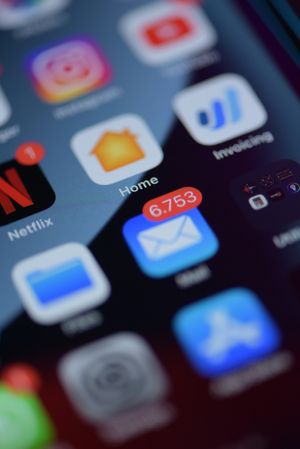BASHO might not stand for “bash them with your awesomeness,” but it might as well. While the concept originated from Jeff Hoffman’s popularization of Matsuo Basho’s haiku poetry, BASHO emails are now synonymous with personalized emails for B2B leads.
In this guide, I’ll walk you through the principles of a BASHO email and templates you can customize to close your deals.
Let’s dive in!
What Makes a BASHO Email Different?
Let’s step back into the past. The poet Matsuo Basho was born in 1644 in Japan. There, he wrote his best works and became renowned for his minimalist yet impactful haikus. Today, he’s recognized as one of the great masters of haiku and, if you’re in sales circles, he’s the artist to take inspiration from when writing your cold emails.
In sales, a BASHO email is a brief, precise, personalized and highly relevant email sent to a prospect. This means no novels explaining why your offer is the best. Instead, you double down on the research to find the perfect conversation starter.
“Hi [First Name],
I've uncovered some super solutions for [Prospect's Industry] challenges.
Want to see how we can save the day for [Prospect's Company Name] in just 10 minutes?”
Notice the brilliance? Firstly, the email is brief but incorporates lightness. Then, it references a challenge that’s top of mind for the prospect. And finally, it ends with a question and promises not to waste time.
Mind you, this is not your typical “Quick Question” email. Instead, you find a challenge that’s really grating on your prospect’s nerves and lead with that. Of course, some of your BASHO emails can be longer but maintain that brevity and succinctness.
The Three Principles of BASHO Emails
In addition to brevity, there are a few other factors that make BASHO as successful as it is:
1. Storytelling
Storytelling is really where the creativity comes in for a BASHO email. For example, your introduction might start with a relatable personal or customer story that ties into the prospect's pain points:
“I recently worked with a company in the manufacturing industry facing a similar challenge. They were struggling to increase website traffic, just like you.”
Similarly, the journey continues by you explaining how you helped other customers achieve significant outcomes or overcome challenges:
“We recently helped [Another Customer] in manufacturing tackle their website traffic issues. Within weeks, they saw a 40% increase in visitors.”
You can also use the before-and-after narrative to emphasize the changes that might expect a lead after working with you:
“Imagine your website traffic soaring, attracting more leads and driving growth. This transformation is possible – but only if you use the right strategies.”
Finally, you can even craft your CTA as the start of a beautiful friendship:
“If you're ready to script a new chapter in your success story, let's chat. Just 10 minutes and we can start crafting your 'after' together.”
2. Alignment and Timing
The second principle is feeling out for the subtle clues of what’s top of mind to your lead. This part usually looks hard to scale, but it’s not – not with Sales Navigator and similar tools that alert you to what your leads and accounts are posting about.
Take this LinkedIn post as an example and see what you can gauge from what the CEO wrote:
Here’s what this post tells me:
- Company culture and team morale is a big priority for this CEO.
- Everyone’s still missing the team retreat; they wish every day could feel that way.
- Retreats on their own aren’t easily scalable (unfortunately).
Suppose you work in a company that does virtual retreats or even just HR tech to make remote teams feel more connected. This would be the perfect time to send a BASHO email that sounds something like this:
“Hey Peter, I loved seeing your team’s recipes during the retreat! I know you’re all missing [Location] right now, so why not try bonding even more with [Explain Your Solution]? I’d happily walk you or your People Ops through our success stories, [Reference Success Stories and Metrics]!”
3. Following up on BASHO Emails
The final principle of BASHO emails, the way I’ve seen them work best, is remembering to follow up. You should always follow up at least once or twice if the prospect has demonstrated interest.
You can compose your whole sequence of BASHO emails or combine them with longer ones. This is why the method works so well for drip campaigns and nurture sequences – you combine value with short pieces of information that pique curiosity.
For example, perhaps your first email addressed their pain points. In the second, you could follow up with an offer to share more resources or reference a customer success story:
“Hi [First Name], I remember you were facing [Prospect's Pain Point], which is why I reached out initially. I still believe our solution can help you experience [Results]. When would be the best time for us to grab virtual coffee?”
But what if the lead hasn’t responded at all? First, check your cold outreach tools to see if they opened the email. If they have, acknowledge the silence and double down on the value proposition:
“Hi [First Name], I understand how busy things can get. Just a quick reminder that [Solution] could remove [Task] from your to-do list the same way it did for [Another Company]. Would you prefer if we did this async?”
Notice how I mentioned doing things asynchronously? Even though your first instinct is to book a sales call or a demo, in some cases, it may be counter-productive. Instead, offer a lighter way for the prospect to make a micro-commitment.
The Anatomy of a BASHO Email
Broken down into its most essential parts, a BASHO email consists of:
- A compelling subject line that piques curiosity and makes the recipient itch to open the email. Be as specific as possible. For example, if your lead needs help with website traffic, go deeper than that. Why are they struggling?
- A punchy and personalized icebreaker that mentions something specific about the prospect's company or industry, showing you've done your research and are genuinely interested in their situation.
- A clear value proposition that makes it immediately clear to the prospect how your company can help. You can use a real-world example, previous customers or any other form of track record.
- A clear call to action (CTA) that naturally leads to the continuation of the conversation.
Add gift wrapping and you’re done!
When Should You Use a BASHO Email?
BASHO emails work at any stage of your sales pipeline, from the first touchpoint with a cold lead to reengaging a lead at risk of going cold. In particular, I recommend using it in the following scenarios:
- You’re dealing with a senior stakeholder who’s short on time. The last thing you want to do is inundate – instead, BASHO emails help you entice.
- Break the ice during cold outreach. BASHO emails are fantastic for starting a conversation with prospects who have never interacted with you before.
Cut down on the jargon and use humor to break the pattern instead!
- You can’t bypass the phone gatekeeper. If you usually use cold and warm calls for outreach, you should try BASHO when you can’t seem to convince the gatekeepers to give you the stakeholder’s number.
- You’re dealing with multiple stakeholders who need to be convinced of your offer. The best way to tackle big accounts’ objections is to talk to the people who need to sign off on the deal.
- You want to reengage a prospect. If a prospect has seemingly dropped off the face of the Earth, it might be a good time to kickstart the interest by sending a BASHO email personalized to their current challenges.
For example, you could fire off a customer success story in the BASHO way:
“Hi [First Name], I recently helped [Customer's Name] in [Prospect's Industry] achieve [notable result]. Ready for your success story?”
Your mileage will vary, but remember the principles and test, test, test!
My Favorite BASHO Email Sequence
If you want to build a whole sequence out of BASHO emails, check out the sequence that gave me great results! Of course, make sure you customize it to your audience and do detailed research before clicking “Send.”
First Email: The Initial Contact with BASHO
Let’s suppose our lead recently got a promotion. Now, they’re hiring a new marketing team. We’re a recruiting agency that specializes in having a broader talent pool than any of our competitors, including a lot of passive candidates searching for better offers.
Our first BASHO would look something like this:
“Subject line: Why didn’t the perfect candidate for [Role] cross the road?
Hey [First Name],
All the best ones are already taken, aren’t they?
We both know the drill: the perfect candidate for [Role] needs to be [Characteristics]. But did you know they’re probably working for a different company and haven’t heard of your job opening yet?
Our agency specializes in contacting those hard-to-reach candidates. [Explain the Details.] This has allowed clients like [Other Clients] to [Reference Metrics and Outcomes].
I’d love to show you the strategies that will lead you from booking 20+ spray-and-pray interviews to booking 5 solid ones with your ideal candidates.
When’s the best time to chat?”
Another way to keep things brief is to list the peskiest challenges your lead is facing:
“Hey [First Name],
Does this sound like what you’re currently dealing with:
- Low-quality candidates that don’t have 50% of the skills you’re looking for?
- High-quality candidates who shop around and ghost your offers?
- A frustrated team that needed help yesterday?
We helped [Other Companies] overcome all of these obstacles and hire in X days.
Are you open to hearing more?”
Make sure you include your signature, contact information and a Calendly link that allows them to book the right time!
Yesware’s example, which I absolutely love because of the bullet-point approach!
Second Email in Your BASHO Sequence: Following up with More Information
We strongly alluded to value in the first email, but we had to sacrifice some of the information for the sake of brevity. That’s why we’ll send a second email that’s more than just a reminder for the first!
“Subject line: [Company] hires X faster. Here’s how you can do it, too!
Hey [First Name],
There’s no magic to [Company] hiring for [Role] in X days. They just chose to work with us. Thanks to our pool of specialists looking for new opportunities, we can connect you with the ideal candidates for [Role] faster.
Here’s how our method works:
[Explain how the process works, ensuring it doesn’t sound too overwhelming for the lead.]
Interested? Let’s book a quick chat to discuss [Obstacles] and get interviews with the best candidates!”
The second follow-up’s value can be a position statement (tailored to the prospect), a case study, lead magnet or anything else that further convinces them that your offer is right.
However, I recommend using the second email to provide more information on the process for the lead because that gives you room to expand on social proof in the following email.
Bonus points if you use video prospecting and personalized videos to walk the lead through your offer.
Third Email: Social Proof
In the third BASHO email, it’s time to show the leads that you have a track record and can put your money where your mouth is—the more relevant the social proof, the better.
For example, if you’re recruiting candidates in the manufacturing industry, choose a case study for it. If you know the prospect has some peculiarities in their hiring process (e.g., they require a very niche degree), mention it and reference track record in similar situations.
“Subject line: X Successful Hires Made in [Industry or Specific Scenario]
Hey [First Name],
Are we as good as we say? I can put you in touch with our customers or you can learn more about the experiences and outcomes [Other Company] experienced after working with us:
[Summarize the outcomes, achievements and results.]
Take a look at: [Link]
Sounds good? Let’s grab virtual coffee to discuss a solution that’ll reduce your team’s load when hiring for [Role]!”
Fourth Email: An Irresistible Offer
If the account is big or this BASHO sequence is a part of your account-based approach where you want to land a significant deal, go the extra mile. You can always offer something for free that’s substantial enough to move the needle.
For example, if you were in SEO, you could offer a free SEO audit or a quick Loom video showing the immediate improvements you’d make to the client’s site.
If you’re in recruitment, like in our example, you could anonymize a few candidate profiles and share them with your lead.
“Subject line: [X] Cherry-Picked Candidate Profiles for [Role] in [Company]
Hey [First Name],
I reviewed your job posting again and found X candidates that would be a great fit. Check them out here:
[Link]
Let me know if you’re interested in any of these! Happy to make an introduction.”
I’m all for scaling outreach, which is why I built Findymail to help you find verified email addresses. But for some accounts, you have to do the legwork or create dynamic email templates.
Fifth Email: The Breakup
If you’re hearing crickets after sending an optimized BASHO sequence, it might be time to let go of the lead and focus on more qualified prospects. That doesn’t have to mean you should end things on a sour note.
On the contrary, many previously unattentive leads take the breakup email as a chance to hop on a great offer before they lose it.
Keep the door open with an empathetic email that doesn’t make anyone feel guilty:
“Subject line: Wrong timing to hire [Role]? I get it!
Hey [First Name],
I understand if our offer to [Repeat the Offer and Info] has come at the wrong time.
In the meantime, I wish you the best of luck with [Effort]!
Let me know if your needs change or you’d like to book some time.”
Many sales professionals swear by guilt-tripping people into responding to their emails. Unfortunately, those are the ones who often get expletives thrown their way instead. If the lead isn’t feeling up to it, they aren’t – others will be.
So stay professional and polite, keeping the door open for future collaborations!
P.S. If you’re not sure how to bring about the breakup email in the sequence, you could always say you’re closing out your deals for the month/year in a week, so you’re assuming they’re no longer interested.
How to Automate and Scale BASHO Emails
The best cold emails are always built on a per-lead basis.
However, we’ve all got quotas to hit, so this is what your essential stack for BASHO automation should look like:
- Lead gen list builder like Sales Navigator.
- Email finder and verifier like Findymail.
- Cold outreach tool that supports merge tags like Instantly.
- Data enrichment tools like ZoomInfo.
- CRM like Zoho to segment your audience and build situation-specific collateral.
This stack should allow you to find leads, capture personalized information about them and use dynamic cold email templates to scale your BASHO outreach without having to write every email.
But if you’ve only just started using cold email, I recommend getting familiar with cold email warmup and email finders. They’re the absolute musts, even when you’re doing everything yourself!
What Do Haikus and Sales Have in Common?
What started as an approach to sales emails that encapsulates brevity and storytelling to catch your lead’s attention turned into a sales-making machine. If you bookmark and follow this guide, you’ll be well on your way to starting profitable conversations on an exciting note!
And if you need help finding your lead’s verified email addresses, try Findymail.
You’ll get 10 free credits to take our email-finding and verifying algorithm for a test drive!






